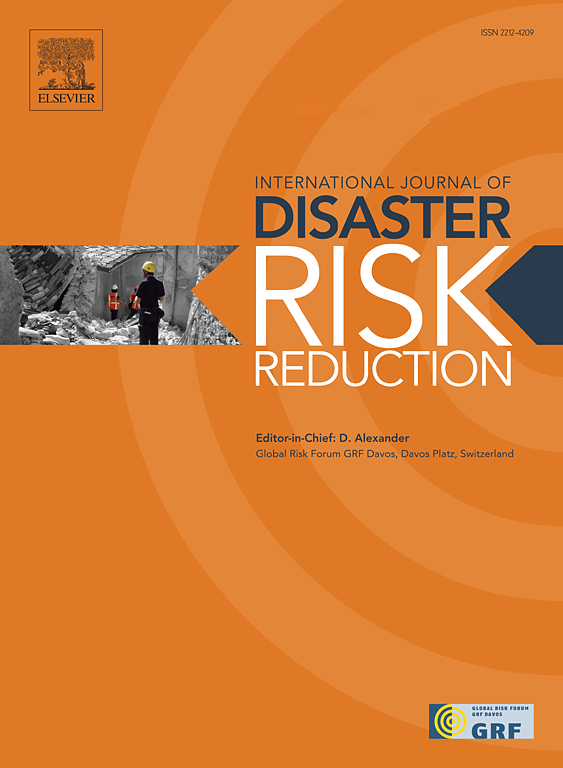政府风险沟通与应对网络:来自中国台风新闻的启示
IF 4.2
1区 地球科学
Q1 GEOSCIENCES, MULTIDISCIPLINARY
International journal of disaster risk reduction
Pub Date : 2025-06-06
DOI:10.1016/j.ijdrr.2025.105587
引用次数: 0
摘要
风险沟通在灾害预警和管理中发挥着关键作用,社会媒体正在成为信息传播的有力工具。虽然存在大量关于风险沟通的研究,但将政府作为主要主体的研究有限,在审查城市间和城市组织应急反应方面存在明显差距。本研究旨在通过探索和评估中国政府在台风灾害期间的沟通策略来解决这些差距。我们从237个城市政府的b微信公众号中收集了一整年的台风相关新闻,以及同期的相应台风数据。在此基础上,我们提出了一个政府风险沟通的分析框架。首先,我们设计了一个基于灾害管理周期的三阶段分析方法(灾前、灾中、灾后)来分析公众参与的动态。其次,我们开发了城市和组织提取器来构建城市和组织响应网络,为研究城市协作和组织协调提供了新的途径。最后,利用大型语言模型,我们开发了标题特征提取器和情感分类模型,为优化政府媒体策略提供了有价值的见解。总体而言,本研究为政府风险沟通提供了新的研究方法和视角。本文章由计算机程序翻译,如有差异,请以英文原文为准。
Government risk communication and response networks: Insights from typhoon news in China
Risk communication plays a critical role in disaster warning and management, and social media is emerging as a powerful tool for information dissemination. While substantial research exists on risk communication, studies focusing on governments as the primary subject are limited, and there is a noticeable gap in examining inter-city and city-organization emergency responses. This study aims to address these gaps by exploring and evaluating China’s governmental communication strategies during typhoon disasters. We collect typhoon-related news from the WeChat Official Accounts of 237 city governments over an entire year, alongside corresponding typhoon data for the same period. Based on this dataset, we propose an analytical framework for government risk communication. First, we design a three-stage analysis method (pre-disaster, mid-disaster, and post-disaster) based on the Disaster Management Cycle to analyze the dynamics of public engagement. Second, we develop city and organization extractors to construct city and organization response networks, offering fresh approaches to studying city collaboration and organizational coordination. Finally, leveraging large language models, we develop a title feature extractor and sentiment classification model, providing valuable insights for optimizing government media strategies. Overall, this study offers novel methods and a fresh perspective on government risk communication.
求助全文
通过发布文献求助,成功后即可免费获取论文全文。
去求助
来源期刊

International journal of disaster risk reduction
GEOSCIENCES, MULTIDISCIPLINARYMETEOROLOGY-METEOROLOGY & ATMOSPHERIC SCIENCES
CiteScore
8.70
自引率
18.00%
发文量
688
审稿时长
79 days
期刊介绍:
The International Journal of Disaster Risk Reduction (IJDRR) is the journal for researchers, policymakers and practitioners across diverse disciplines: earth sciences and their implications; environmental sciences; engineering; urban studies; geography; and the social sciences. IJDRR publishes fundamental and applied research, critical reviews, policy papers and case studies with a particular focus on multi-disciplinary research that aims to reduce the impact of natural, technological, social and intentional disasters. IJDRR stimulates exchange of ideas and knowledge transfer on disaster research, mitigation, adaptation, prevention and risk reduction at all geographical scales: local, national and international.
Key topics:-
-multifaceted disaster and cascading disasters
-the development of disaster risk reduction strategies and techniques
-discussion and development of effective warning and educational systems for risk management at all levels
-disasters associated with climate change
-vulnerability analysis and vulnerability trends
-emerging risks
-resilience against disasters.
The journal particularly encourages papers that approach risk from a multi-disciplinary perspective.
 求助内容:
求助内容: 应助结果提醒方式:
应助结果提醒方式:


